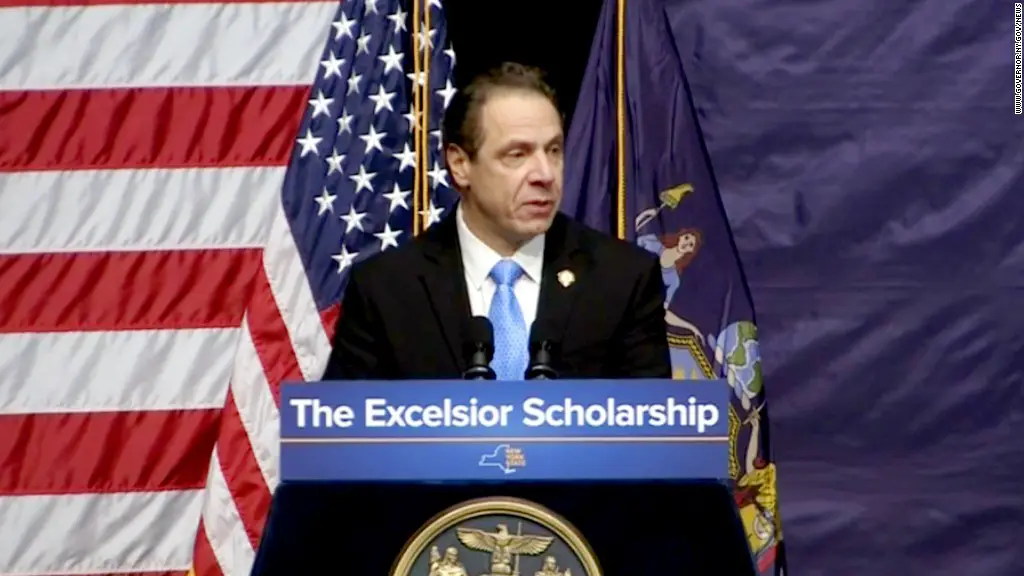The Fine Print
The plan, dubbed the Excelsior Scholarship, is ambitious but imperfect. Here are its biggest drawbacks.
By Rachael Seamands, IUPUI
When researching prospective universities, tuition can be discouraging.
On average, private universities cost around $33,000, out-of-state tuition at public universities tops out at $25,000 and in-state residents can expect to pay around $9,500 per year at a public university. Because of the exorbitant price, many students pay their way through school with part-time jobs, in addition to taking out student loans and relying on every cent of scholarship they can get.
But, imagine googling the college of your dreams and discovering that its once foreboding price tag of $30,000 had dropped to $0. If your dream school is in New York, the situation is no longer hypothetical.

The state of New York recently passed legislation that proposes to offer free tuition for two and four-year colleges. The bill, which has been dubbed the Excelsior Scholarship by creator Governor Andrew Cuomo (and re-dubbed the “last dollar” program by others), was approved in early April as a part of the New York state budget.
In New York, there are over sixty college campuses and more than a million college students. The new program’s cost is estimated at about a $163 million dollars a year. The Excelsior Scholarship will be available to any student whose family makes up to $100,000 a year for the first year of the program’s implementation, but the hope is that it will increase to a $124,000 by the third year.
It all sounds too good to be true, but is it? The program itself is real enough, but there are some catches.
1. You’re Agreeing to a Non-negotiable Timeline
In order to reap the benefits of the program, you must graduate and you must do so on time. In other words, whether you are receiving a two-year associate’s degree or a four-year bachelor’s degree, you must start school, stay the entire time and graduate by the end of the time period. A minimum grade-point-average requirement has also been added to the list of stipulations.
Another restriction says that after graduating with your degree, you must remain in New York to work during the duration of the time you were in school, either two or four years. If you fail to do so, the money given to you with the scholarship will be retroactively converted into a student loan that must be repaid. Cuomo gave his reasoning for this restriction during a phone call with writers of New York: “Why should New Yorkers pay for your college education, and then you pick up and you move to California?” Cuomo went on the say that the whole idea of the scholarship is that those who benefit will stay and become an asset to New York.
2. The Neediest Students Are Not Benefited
While the eligibility for the program caps for students whose parents make $100,000 a year, it bottoms out at $50,000 as well. For prospective college students whose families do not make over $50,000, they will not benefit from the scholarship due to the fact that they are reaping the benefits of other financial aid opportunities.
Plus, the program’s financial benefits cannot be used until students have already applied to college, which requires payments such as application fees and costs of traveling for college visits. Therefore, families that make more than $50,000 a year but still cannot afford these types of initial fees are less likely to reach the point where they may benefit from the scholarship’s helping hand. Consequentially, the program might end up benefitting New York families with a higher income.
3. College Costs More Than Yearly Tuition
The proposed scholarship will cover the intimidating number with too many zeros that appears on the tuition tab on any university’s website. However, current college students and their families know that the expenses don’t end there.
The bill will not pay for room and board, books or supplies of any kind. For an in-state public college student, the average cost of books and supplies is over $1,200 per year, while room and board costs over $10,000. Along with transportation and other miscellaneous fees, the cost of college without counting tuition is around $15,000. These costs increase for out-of-state public or private-school students, reaching daunting prices that have a fair amount of zeros themselves.

As a result, the headline of “free college” that has been splashed across the media gives false belief that for eligible students, not a dollar will need to be spent. This is not the case, however, and in some situations, the cost of room and board, books and other fees total more than the school’s base tuition.
Bernie Sanders, who talked about implementing a debt-free college plan during his presidential campaign, said himself that there are a few points in the bill with which he disagrees. Still, Sanders applauds Governor Cuomo and the lawmakers of New York for their courage to be the first to attempt the impossible.
4. The Word “Free” Is Too Appealing
One of the existing complaints about the current financial-aid system, FAFSA, in the U.S., is that prospective students cannot see what their tuition will cost until they apply. For this reason, many students incorrectly believe that they would not be able to afford college, even if some of them would not end up having to pay tuition at all. Students who conduct research about their options for FAFSA while still in high school are more likely to figure out what it would cost, and therefore try harder in school in order to keep college as a viable option.
The message that “free tuition” gives off, however, appeals to more than just needier students. With the new program, New York state is likely to receive a much higher number of applications from students of middle-income families once it goes into effect. Not all New York colleges have the capacity to accept so many more students hoping to take advantage of the program, especially considering that cutting out families who earn more than $100,000 or less than $50,000 a year only eliminates about a fifth of the pool. One has to wonder what the number of applicants will rise to after the implementation of the program.
While the possible demerits of the Excelsior Scholarship are important to keep in mind, the concept still holds promise. Creating a plan that leads to eliminating the cost of tuition for a great number of prospective students in New York is a major step that has not been taken before on such a level.
In any prototypical big idea, some parts succeed and some parts fail. The Excelsior Scholarship plan is an ambitious one, and the nation will no doubt be waiting with bated breath to see how it turns out.












